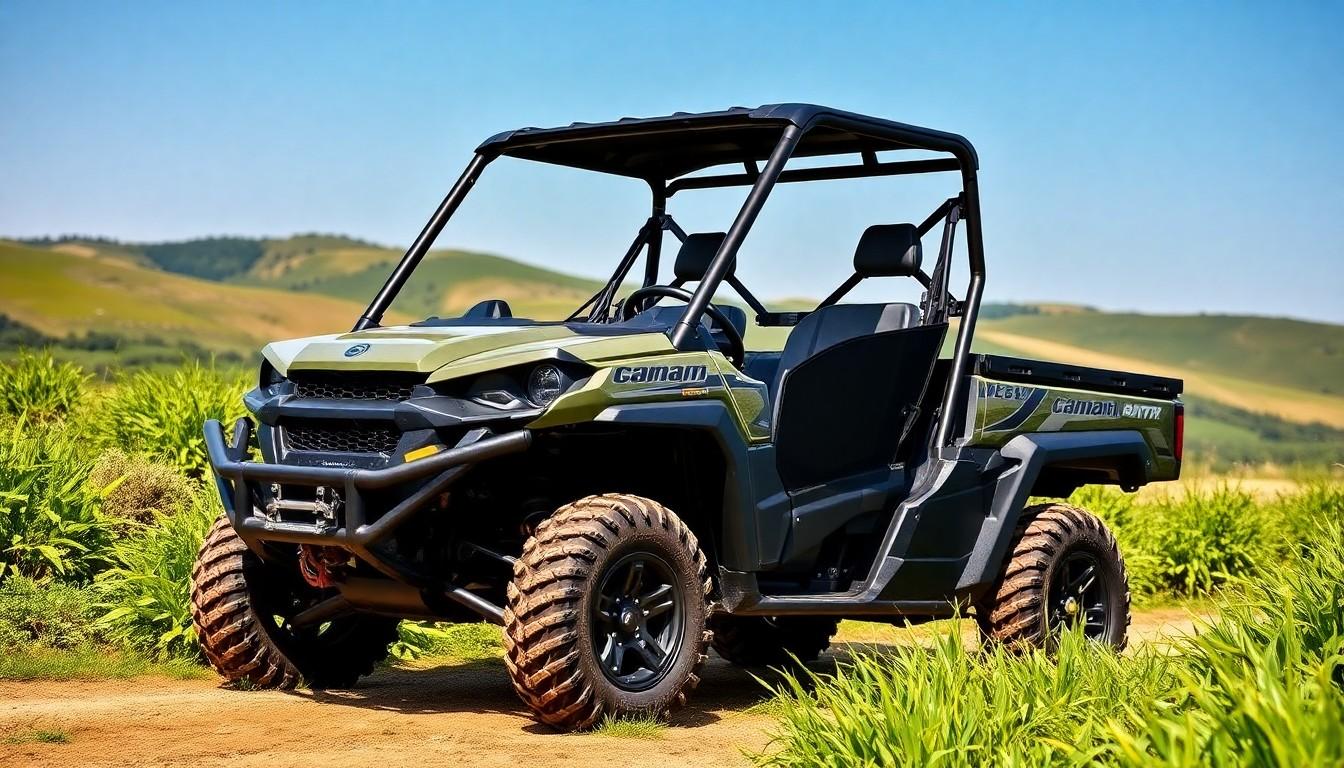The Can-Am Defender has earned its reputation as a rugged workhorse in the UTV market, but even the most reliable machines aren’t without their issues. We’ve gathered feedback from countless owners and mechanics to identify the most frequent problems these popular side-by-sides encounter over time.
From troublesome CVT belt failures to electrical gremlins that appear without warning, understanding these common Defender challenges can save you considerable time and money. Whether you’re a current owner experiencing frustrating symptoms or a prospective buyer wanting to make an well-informed choice, our comprehensive guide will help you navigate the most notorious Can-Am Defender problems and their answers.
Understanding the Can-Am Defender: An Overview
The Can-Am Defender stands as a powerful utility terrain vehicle (UTV) designed for both work and recreation. Manufactured by BRP (Bombardier Recreational Products), this robust machine first hit the market in 2016 and quickly established itself as a frontrunner in the UTV category. Built with a heavy-duty frame and offering exceptional towing capacity, the Defender caters primarily to farmers, ranchers, hunters, and outdoor enthusiasts who need reliable transportation across challenging terrain.
Key specifications of the Defender include engine options ranging from 50 to 82 horsepower, payload capacities reaching up to 1,750 pounds, and towing capabilities of up to 2,500 pounds. The vehicle comes in various configurations, including two-seater, four-seater (MAX), and six-seater (MAX) models, accommodating different group sizes and cargo needs. Its modular design features a spacious cargo box with a tilting function, making it practical for transporting materials and equipment.
Over the years, Can-Am has expanded the Defender lineup to include specialized models like the Limited, Lone Star, and North Edition, each customized to exact environments and use cases. These versions offer unique features such as climate control, specialized suspension systems, and terrain-exact tires. Even though its robust design and versatility, the Defender experiences several recurring issues that owners should recognize before purchase or during ownership.
Electrical System Issues in Can-Am Defenders
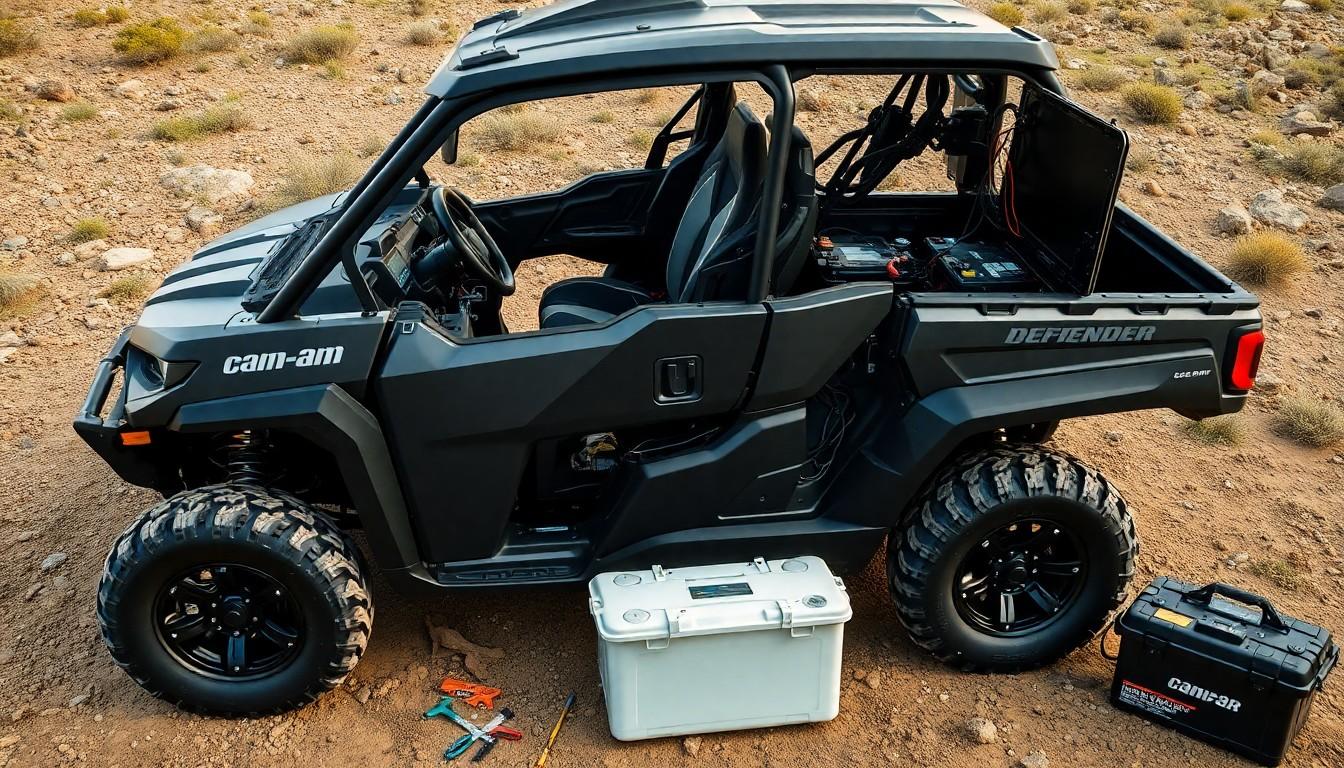
The electrical system in Can-Am Defenders presents several recurring problems that owners frequently encounter. These issues range from switch malfunctions to alternator failures, creating important operational challenges for users.
Battery Drainage Problems
Battery drainage ranks among the most frustrating electrical problems in Can-Am Defenders. Failing alternators often stop delivering power to the battery, resulting in unexpected dead batteries that leave vehicles stranded. Many users report that even after extensive use, their Defenders require external power sources to start due to completely drained batteries. The connection between alternator malfunction and battery drainage creates a cycle of reliability issues, especially during long periods of use or when the vehicle sits idle. Regular battery testing helps identify early signs of drainage before complete failure occurs.
Faulty Wiring Connections
Faulty wiring connections contribute to many electrical malfunctions in the Can-Am Defender. Switches and their wiring harnesses can develop excessive arcing, compromising the vehicle’s electrical integrity. Corrosion frequently builds up on connectors, particularly in humid or dusty environments, causing switches to become unresponsive or function intermittently. Cleaning these connections and applying electrical grease serves as an effective preventative measure against connection failures. BRP’s factory switches appear especially vulnerable to gunk accumulation, requiring more frequent maintenance than owners might expect. Swapping out problematic switches and harnesses can reduce voltage issues and improve overall electrical system reliability.
Engine and Performance Challenges
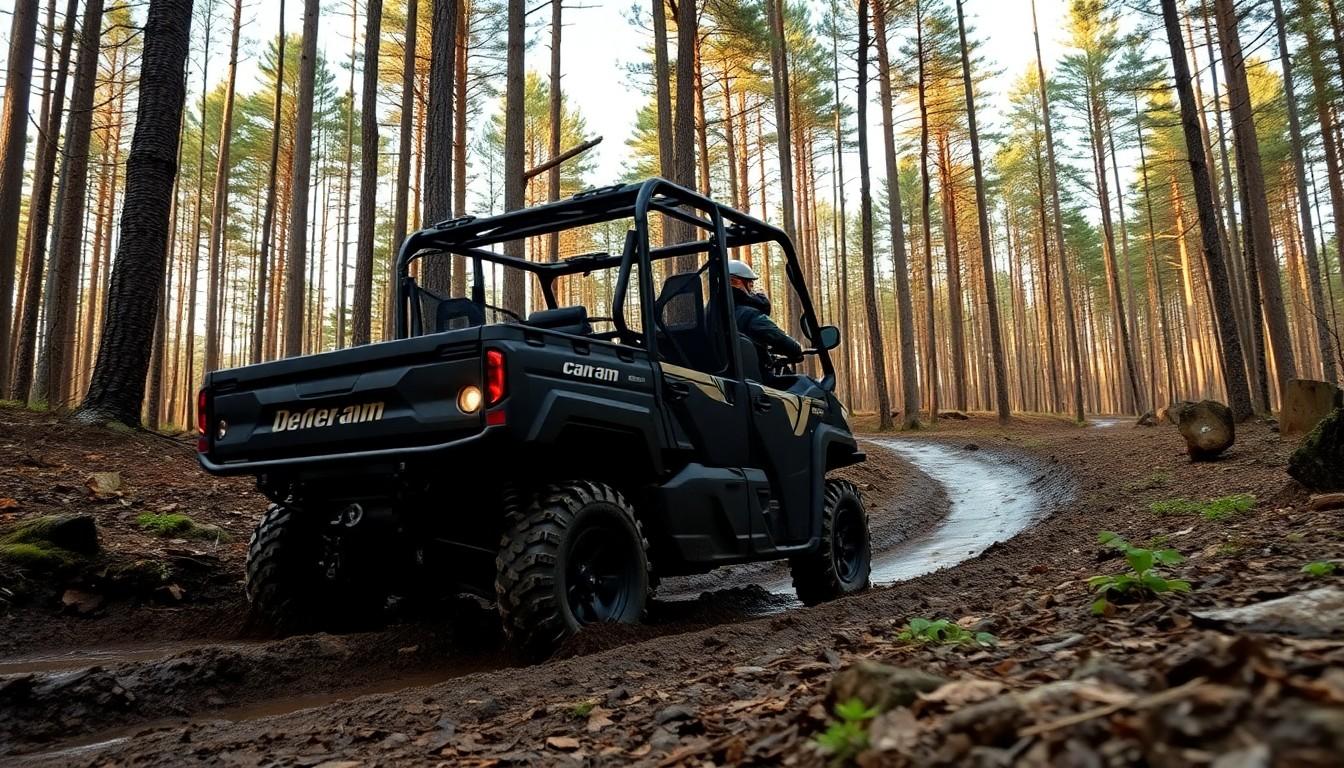
Can-Am Defender owners frequently encounter several engine and performance issues that can impact their riding experience. These challenges range from overheating problems to transmission difficulties that require attention to maintain optimal vehicle operation.
Overheating Concerns
Overheating is one of the most important issues affecting Can-Am Defender models, often leading to serious complications with head gaskets. Regular monitoring of the cooling system helps prevent these temperature-related problems before they escalate into costly repairs. Many riders report that maintaining proper coolant levels and ensuring radiators remain clean from debris significantly reduces overheating incidents. Grinding noises during gear shifts indicate worn-out pawls within the transfer case, a common complaint that requires prompt attention to avoid transmission damage. Differential failures in both front and rear units have been documented across various model years, with aftermarket upgrades offering more durability than factory components.
Power Loss and Stalling
Power interruptions plague many Can-Am Defender vehicles, with alternator failures being a primary culprit behind battery drainage issues. These electrical system deficiencies often result in unexpected stalling, leaving riders stranded during crucial operations. Performance degradation typically occurs when the vehicle operates under heavy loads or during intense use scenarios, correlating with overheating episodes or transmission complications. Hard shifting problems and broken shift linkages further compromise vehicle reliability, stemming from improper setup or extended wear on original components. A/C system malfunctions, including oil leaks and freon deficiencies, can strain the electrical system and indirectly contribute to performance issues during operation. Reverse chain breakage presents another mechanical vulnerability, especially for Defenders equipped with oversized tires or those frequently carrying maximum payloads.
Transmission and Drivetrain Problems
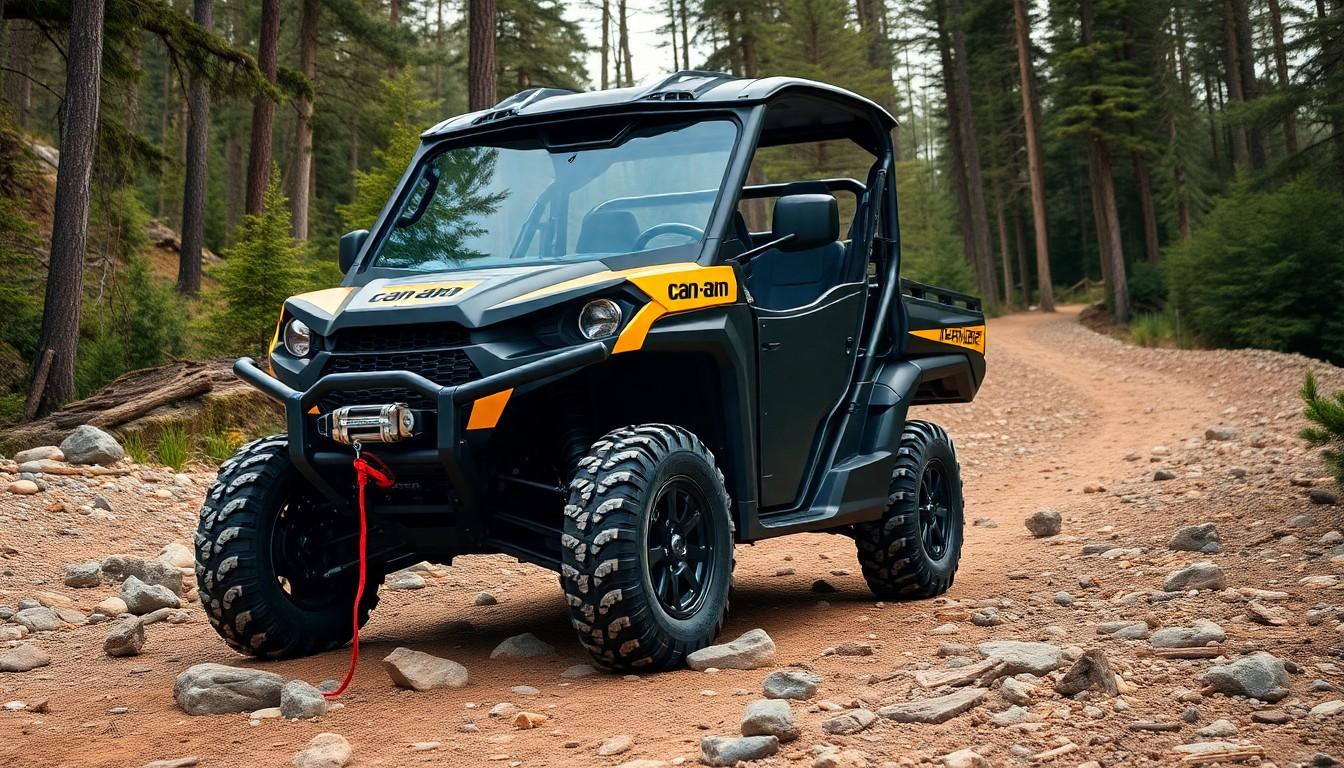
The Can-Am Defender’s transmission and drivetrain systems encounter several recurring issues that owners should be aware of. These problems can significantly impact vehicle performance and reliability when not addressed promptly.
Hard Shifting and Linkage Issues
Hard shifting is one of the most common transmission complaints among Can-Am Defender owners. Many users report poor setup and extreme wear on shift linkages, leading to transmission malfunctions over time. The linkages can become loose or break completely, making it difficult or impossible to change gears effectively. Regular inspection of these components helps catch wear patterns before they lead to complete failure.
Alternator and battery problems frequently accompany transmission issues. The alternator may suddenly stop delivering power to the battery, resulting in a completely dead battery and cascading electrical failures. This electrical failure pattern creates additional strain on the transmission system, as proper electronic control unit function depends on consistent power delivery.
Belt Failures and Replacements
The belt drive system in the Can-Am Defender, while designed for durability, faces reliability challenges under certain conditions. Power delivery problems often occur when belts snap unexpectedly or become dislodged from their tracks during operation. These failures typically happen during high-stress situations such as towing heavy loads or traversing difficult terrain.
Following the manufacturer’s service schedule for belt maintenance is crucial for preventing premature failures. Signs of impending belt issues include burning smells, unusual noises during acceleration, or visible fraying along the belt edges. Addressing these warning signs early can prevent being stranded in remote locations due to complete belt failure.
Differential and 4WD Malfunctions
The Visco-Lok system, a key component of the Defender’s 4WD capabilities, often induces differential wear over time. This progressive wear pattern leads to decreased performance and eventual malfunctions in the 4WD engagement system. Owners frequently report inconsistent power distribution to wheels when operating in challenging conditions.
Turf mode components present another vulnerable area, particularly when reversing under load. These components can break under strain, similar to issues experienced with the reverse chain mechanism. The reverse chain itself is notably prone to breaking, especially when using oversized tires or attempting to pull heavy objects while in reverse.
Preventing these differential and 4WD issues requires gradual RPM build-up and avoiding sudden acceleration, particularly in reverse. Allowing the system to engage smoothly rather than forcing immediate power delivery significantly extends the lifespan of these critical drivetrain components.
Suspension and Steering Complications
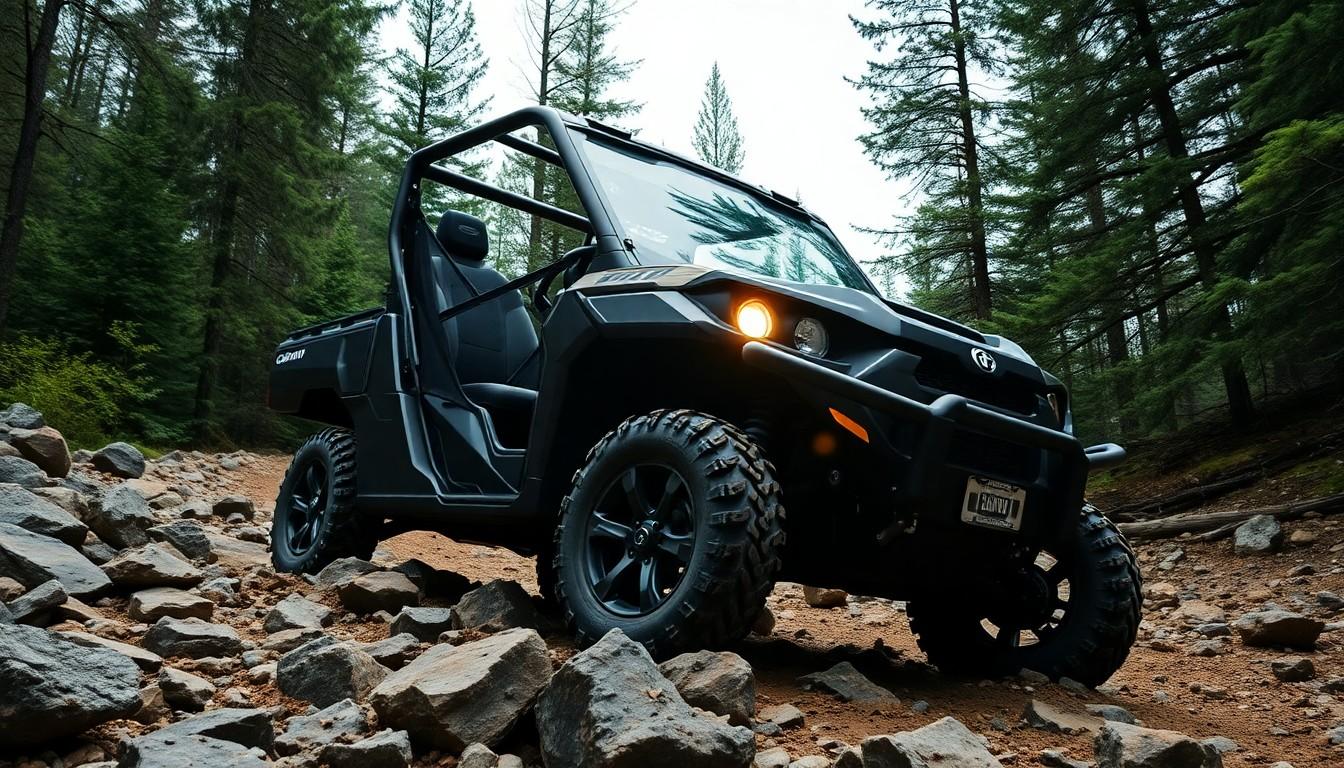
Can-Am Defender vehicles often experience suspension and steering issues that impact performance and comfort during off-road adventures. These complications typically arise from the vehicle’s exposure to rough terrain and heavy-duty usage patterns that put important stress on crucial components.
Premature Shock Wear
Shock absorbers on Can-Am Defenders tend to deteriorate faster than expected due to frequent off-road use and heavy loads. The nature of these vehicles’ usage—traversing rough terrain and handling substantial payloads—accelerates wear on suspension components. Regular inspection reveals early warning signs like fluid leaks around the shock body, inconsistent ride height, and excessive bouncing after hitting bumps. Off-road enthusiasts pushing their vehicles to the limits on challenging trails face faster degradation of these critical components, requiring more frequent replacements compared to casual users.
Alignment and Tracking Issues
Alignment problems manifest in Can-Am Defenders through uneven tire wear and pulling to one side during operation. Though not explicitly documented in manufacturer reports, these issues frequently connect to broader mechanical complications such as turf mode failures. The turf mode components commonly break while reversing under heavy loads, potentially throwing off the vehicle’s alignment and tracking capabilities. Identifying alignment issues early saves owners from expensive tire replacements and improves overall handling performance. The vehicle’s steering responsiveness gradually decreases as alignment problems worsen, creating a potentially dangerous situation when handling technical terrain or carrying maximum payloads.
Common Brake System Failures
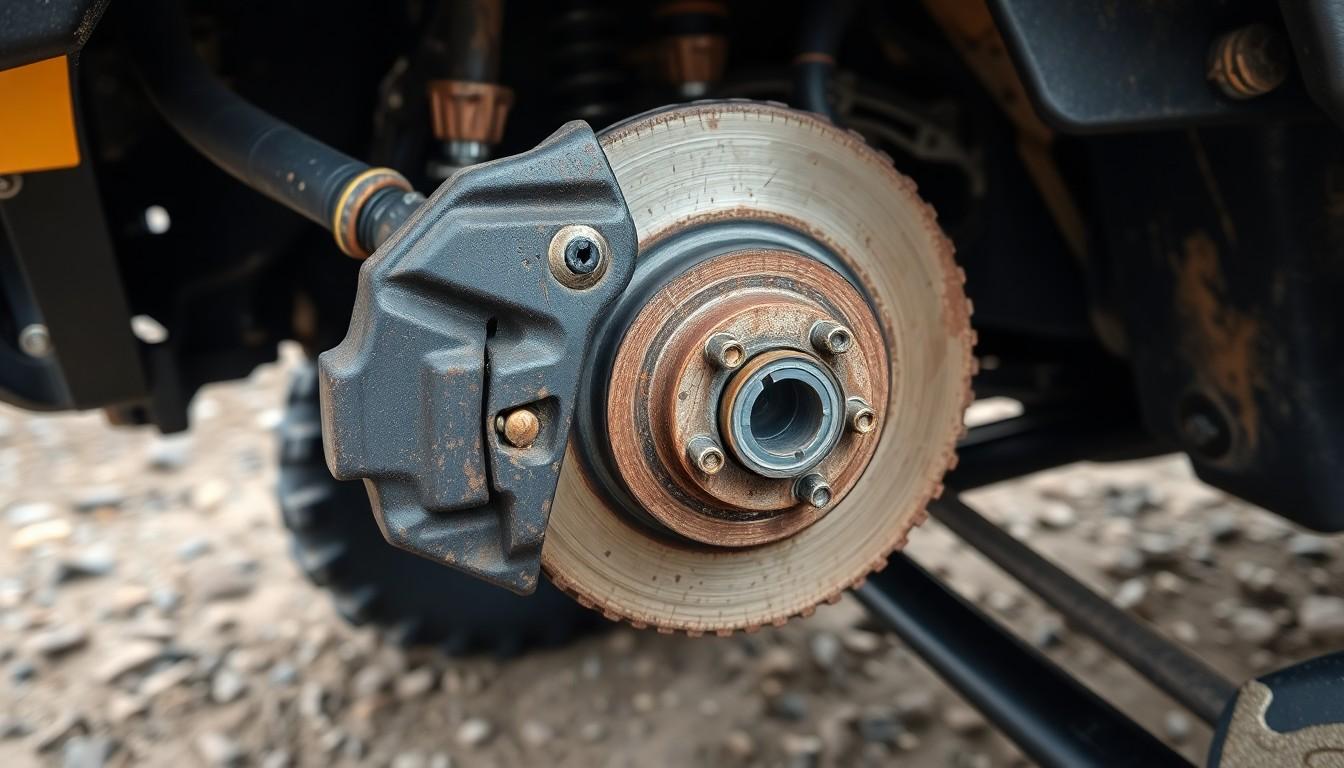
Brake system issues represent some of the most frustrating problems Can-Am Defender owners face during regular operation. Persistent squealing or grinding noises from the brakes plague many units, with reports indicating these sounds often begin right from purchase and continue even though multiple brake applications and normal use patterns. These noises typically point to underlying brake component problems that merit immediate attention.
Can-Am’s OEM brake pads suffer from quality concerns, wearing down significantly faster than aftermarket alternatives. The inferior material composition of factory-installed brake pads contributes to their rapid deterioration, especially during heavy-duty applications like towing or traversing challenging terrain. Many owners find themselves replacing these pads much sooner than expected, adding unexpected maintenance costs.
Brake pad wear indicators often fail to provide accurate warnings, leaving owners unaware of dangerously thin pads until more serious issues develop. This failure of preventative indicators represents a important safety concern, particularly for those who use their Defender for work purposes on rough terrain where reliable braking is essential.
Brake fluid contamination presents another common failure point in the Defender’s braking system. Moisture intrusion and debris can compromise the hydraulic fluid’s integrity, reducing braking efficiency and potentially damaging internal components of the brake system. Regular fluid checks and replacements help prevent this progressive issue from worsening over time.
Brake line corrosion affects Defenders operating in harsh environments, particularly those used near saltwater or in areas with road salt application. The corrosive elements attack the metal components of the brake lines, potentially leading to fluid leaks and catastrophic brake failure if left unaddressed for extended periods.
Cooling System and Radiator Problems
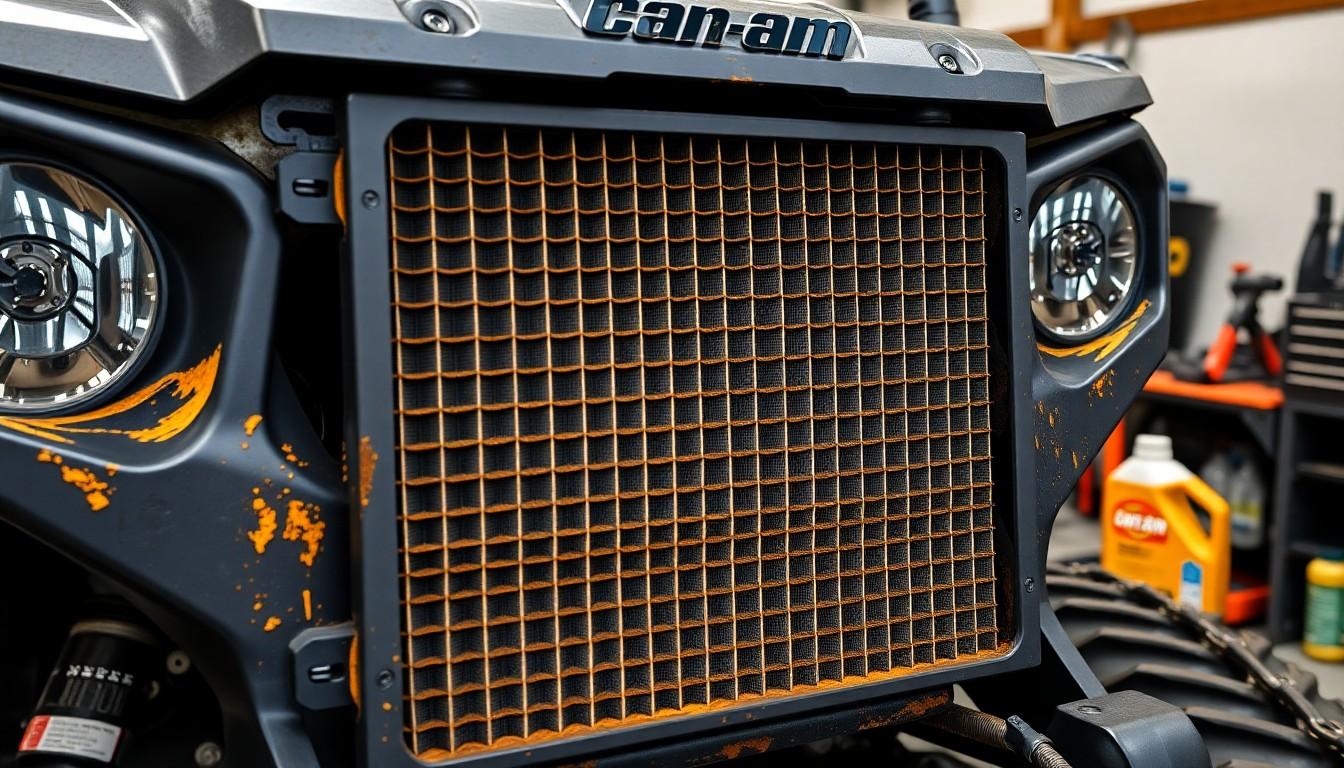
The cooling system in Can-Am Defenders plays a critical role in maintaining optimal engine temperature and preventing overheating. Radiator and cooling system issues can significantly impact vehicle performance and potentially lead to costly repairs if left unaddressed.
Radiator and Fan Failures
Radiator component failures represent a notable concern for many Can-Am Defender owners. Complete replacement of both the radiator and radiator fan becomes necessary for some users due to damage, wear, or performance degradation over time. Overheating issues often prompt these replacements, particularly in models subjected to heavy-duty use or extreme operating conditions. Online video tutorials guide owners through the replacement process, indicating this is a common enough issue to warrant dedicated instructional content.
Indirect Cooling System Impacts
Electrical problems indirectly affect the cooling system’s efficiency in Can-Am Defenders. Alternator malfunctions prevent proper power delivery to the battery, which can compromise the radiator fan’s operation. Dead batteries resulting from these alternator issues leave the cooling system vulnerable, as the radiator fan lacks the necessary power to function correctly. The interconnected nature of these systems means that electrical problems frequently manifest as cooling inefficiencies.
Related Mechanical Complications
Hard shifting and broken shift linkages create additional strain on the engine, indirectly impacting cooling system performance. Increased engine stress from transmission issues generates excessive heat that challenges the cooling system’s capacity. Mechanical problems throughout the vehicle often contribute to a cascade effect that eventually tests the limits of the radiator’s cooling abilities. Regular inspection of connecting components helps prevent these mechanical issues from compromising the cooling system.
Preventative Maintenance
Regular maintenance proves essential for avoiding costly cooling system repairs in Can-Am Defenders. Coolant level checks and timely radiator flushes help maintain optimal cooling performance throughout the vehicle’s lifespan. Inspecting hoses, connections, and the radiator for signs of leaks or damage allows owners to address minor issues before they escalate into major failures. Compared to other commonly reported issues like A/C problems and turf mode malfunctions, cooling system failures receive less documentation but remain important for preventative maintenance considerations.
Body and Frame Durability Issues

Door Seals and Adjustments
Door bottoms frequently fail to seal properly on Can-Am Defenders, creating visible gaps where daylight shows through the bottom seals. Adjusting door strikes offers a partial solution, though these adjustments have limitations before they compromise the door handle functionality. Many owners struggle with this issue even though attempting various fixes, making it one of the more frustrating aspects of the vehicle’s design.
Windshield Issues
Windshield rattling plagues many Can-Am Defender models, especially when traversing rough terrain like dirt roads or washboard surfaces. The persistent squeaking creates an unpleasant driving experience that detracts from the vehicle’s performance. Adjusting the windshield handle provides temporary relief, but this problem typically resurfaces, indicating a fundamental design flaw rather than a simple maintenance issue.
Brake Noise
Brake systems on the Can-Am Defender often produce concerning squealing and grinding sounds from initial operation. These noises typically begin at speeds as low as 10 mph and continue until the vehicle comes to a complete stop. The presence of these sounds from the test drive stage suggests an inherent issue with the brake components rather than normal wear and tear development.
Frame and Structural Integrity
The Can-Am Defender boasts generally robust structural integrity across its frame construction. But, stress indicators appear in certain situations, particularly when the reverse chain breaks under heavy loads or when operating with oversized tires. These failures point to potential weak points in the frame design that can emerge under challenging conditions even though the vehicle’s overall rugged reputation.
Other Miscellaneous Issues
Seat belts in the Can-Am Defender commonly become twisted in the B-pillar mount, creating frustration for riders. While this issue doesn’t directly impact the structural integrity of the body or frame, it reflects attention to detail problems in the vehicle’s design. Such minor but persistent annoyances compound the ownership experience alongside the more important durability concerns.
Preventative Maintenance to Avoid Common Problems
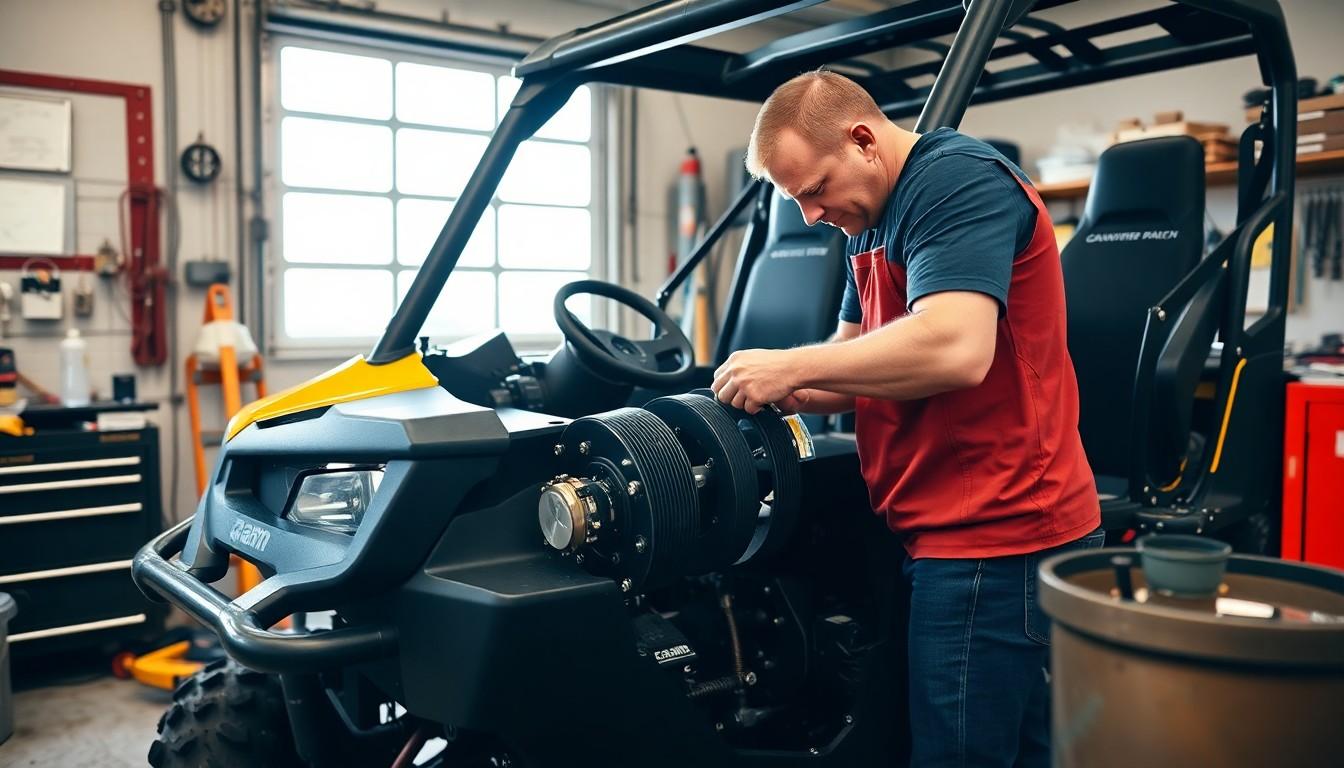
Regular Maintenance Schedule
Following the manufacturer’s recommended service intervals prevents many common Can-Am Defender issues. Regular checks of the belt drive system, brakes, and electrical components catch potential problems before they become serious failures. Most owners find that adhering to these schedules significantly extends vehicle lifespan and reduces unexpected breakdowns during critical work or recreation time.
Cleaning and Lubrication
Electrical switch failures often stem from corroded connections that develop over time. Cleaning the connectors on switches and applying electrical grease creates a protective barrier against moisture and dirt infiltration. Thorough cleaning after off-road adventures removes mud, debris, and water that accelerate wear on vital components, particularly in the drivetrain and suspension systems.
Proper Use Techniques
Handling your Defender correctly prevents premature component failure. Taking it easy when backing up and building RPMs gradually reduces stress on the reverse chain – a common failure point in these vehicles. Never attempt to pull another vehicle while in reverse, as this frequently leads to broken turf mode components and drivetrain damage that requires expensive repairs.
Routine Inspections
Performing regular visual inspections identifies developing problems before they cause breakdowns. Check brake pads for wear, examine belt condition for cracks or fraying, and inspect door seals and windshield components for proper fit. Many owners create a monthly inspection checklist targeting known problem areas like alternator connections, brake lines, and cooling system components.
Proper Setup and Adjustments
Transmission and shift linkage problems often result from improper initial setup or subsequent adjustments. Ensuring these systems are correctly calibrated prevents hard shifting and broken linkages. Consulting with experienced mechanics for proper setup pays dividends through smoother operation and fewer failures, especially for owners who regularly push their vehicles to maximum capacity.
Conclusion
While the Can-Am Defender stands as a robust UTV choice for outdoor enthusiasts and workers alike we’ve identified several recurring issues owners should watch for. From CVT belt failures to electrical system complications these problems can impact your riding experience and maintenance budget.
By understanding these common challenges you’re better equipped to make informed decisions whether you’re considering a purchase or already own a Defender. Regular maintenance checks paying attention to cooling systems and addressing electrical issues promptly will significantly extend your vehicle’s lifespan.
Even though these concerns the Defender remains a capable workhorse when properly maintained. With vigilance and preventative care you’ll enjoy the performance and reliability that made the Defender popular in the first place.
Frequently Asked Questions
What are the most common issues with the Can-Am Defender?
The most common issues with the Can-Am Defender include CVT belt failures, electrical problems (such as switch malfunctions and battery drainage), overheating issues, transmission difficulties, and brake system failures. Many owners also report suspension wear, radiator problems, and minor body issues like door seals that don’t close properly and windshield rattling on rough terrain.
How reliable is the Can-Am Defender’s electrical system?
The Can-Am Defender’s electrical system has several reliability concerns. Common problems include switch malfunctions, alternator failures, and battery drainage issues that can leave vehicles stranded. Faulty wiring connections and corrosion on connectors can compromise the electrical integrity. Regular maintenance, including cleaning connections and replacing problematic switches, can significantly improve reliability.
What causes overheating in Can-Am Defenders?
Overheating in Can-Am Defenders typically stems from cooling system issues, including radiator and fan failures, low coolant levels, or electrical problems affecting the cooling components. Alternator malfunctions can compromise radiator fan operation, leading to insufficient cooling. Heavy-duty use in extreme conditions can exacerbate these problems, potentially causing serious complications with head gaskets if not addressed promptly.
Are Can-Am Defender brake problems common?
Yes, brake problems are fairly common in Can-Am Defenders. Many owners report persistent squealing or grinding noises from the brakes, even on new vehicles. The OEM brake pads tend to wear down faster than aftermarket alternatives, and brake pad wear indicators sometimes fail. Brake fluid contamination and brake line corrosion can also occur, particularly in harsh environments.
How can I prevent transmission issues in my Can-Am Defender?
To prevent transmission issues in your Can-Am Defender, follow the manufacturer’s recommended service intervals and perform routine inspections. Ensure proper setup and adjustments of transmission systems, regularly check and replace CVT belts before they fail, and address any hard shifting or linkage issues promptly. Also maintain the electrical system since alternator and battery problems can affect transmission performance.
What maintenance is required for the Can-Am Defender suspension?
The Can-Am Defender suspension requires regular inspection for signs of shock wear, especially with frequent off-road use and heavy loads. Check for leaking fluid from shock absorbers, uneven tire wear, and alignment issues. Lubricate suspension components according to the maintenance schedule and address any tracking problems promptly. Proper maintenance extends the lifespan of these components and improves overall ride comfort.
How do I fix door seal problems on my Can-Am Defender?
To fix door seal problems on your Can-Am Defender, first clean both the door seal and the frame where it makes contact to remove any dirt or debris. Apply a silicone-based lubricant to the seal to improve flexibility and reduce sticking. Check for any warping or damage to the door or frame and adjust the door hinges if necessary. For persistent issues, replacement door seals may be required.
What is the typical lifespan of a Can-Am Defender CVT belt?
The typical lifespan of a Can-Am Defender CVT belt varies depending on usage conditions, but most owners report 1,000-3,000 miles before replacement is necessary. Heavy-duty use, frequent towing, and operating in muddy or dusty conditions can significantly reduce belt life. Regular inspection for signs of wear, proper break-in procedures for new belts, and avoiding excessive throttle application can help extend belt longevity.

